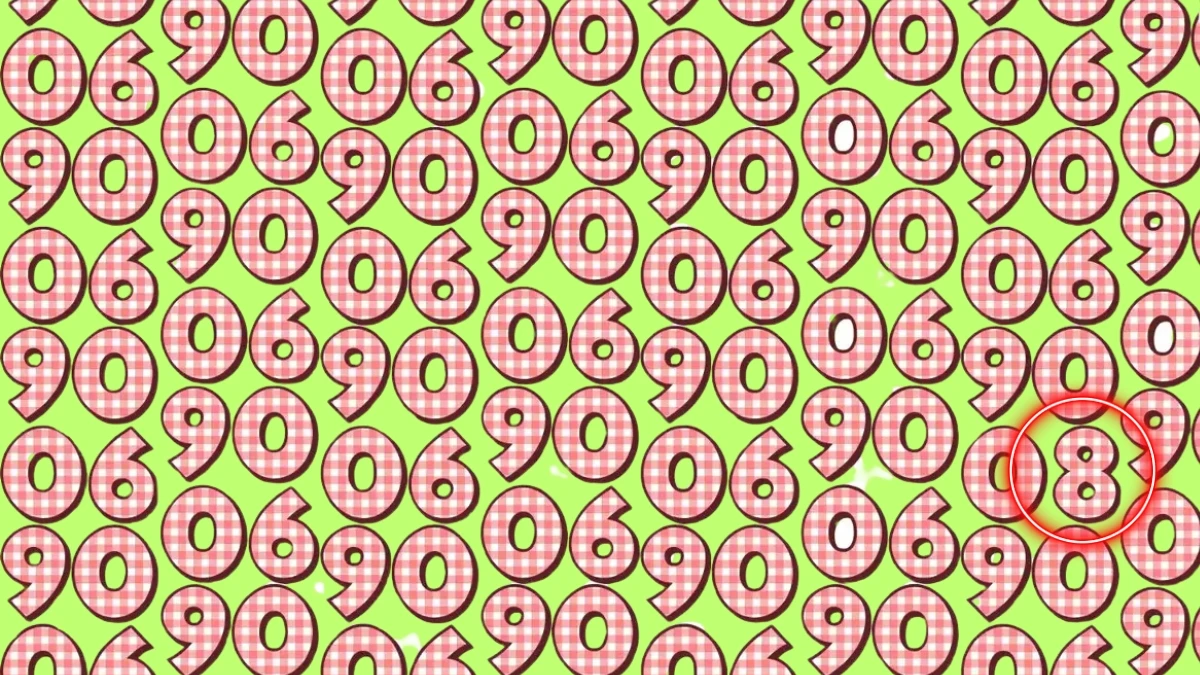A new optical illusion challenge has captured attention by testing viewers’ observation skills in a clever way. The challenge involves spotting a single hidden number 8 amid a sea of similar-looking digits—0s, 6s, and 9s—all arranged in a grid pattern. While the image may seem straightforward at first glance, it soon becomes clear that finding the 8 is much trickier than expected.
The Trick Behind the Illusion

What makes spotting the number 8 so challenging is how it blends visually with the other numbers. The digits 0, 6, and 9 share similar curved shapes, making the 8’s distinctive double loop easy to overlook. The design uses uniform colours and consistent shapes to lull the brain into filtering the numbers as a repetitive pattern rather than focusing on subtle differences. The brain’s tendency to take shortcuts by grouping familiar shapes causes it to miss the odd number hiding in plain sight.
Why It’s Hard to Spot
When people scan the grid, their brains automatically expect to see more of the repeated digits. This expectation means the mind filters out anomalies to speed up recognition, making it difficult to notice the one element that breaks the pattern. The illusion challenges viewers to slow down and examine each number individually instead of seeing them as part of a uniform group. Those who manage to identify the 8 experience a sense of accomplishment, as the puzzle requires sharp focus and a willingness to shift perspective.
How to Spot the Hidden Number
To increase the chances of finding the hidden 8, experts suggest scanning slowly and focusing on the distinguishing features of each digit. Unlike 0, 6, or 9, the number 8 has two closed loops stacked vertically. Observers should look for this unique double-loop shape rather than the open or single loops present in the other digits. Taking time to look carefully row by row and column by column is the key to success.
Optical Illusion Answer

Optical illusions like this have become popular worldwide because they test visual acuity, concentration, and brain flexibility. Beyond being fun, such puzzles serve as mini brain boosters that encourage mindfulness and mental sharpness. Many share these illusions with friends and family to challenge each other’s observation skills, creating a social element to the activity. In a fast-paced world where distractions are frequent, these exercises offer a welcome opportunity to pause and engage deeply with a simple yet intriguing visual problem.
For Australian readers, optical illusions like this provide a casual brain workout that anyone can enjoy at home or during a break. These puzzles do not require any special skills or tools, just patience and attention to detail. Sharing the challenge on social media or among social groups can create moments of lighthearted competition and interaction. In summary, the hidden number 8 optical illusion is a clever test of how the brain processes patterns and detail. It reminds everyone that sometimes, slowing down and changing your viewpoint is all it takes to solve a tricky problem. So, if the number 8 hasn’t been found yet, it’s time to look again and enjoy the little victory when it finally appears.










